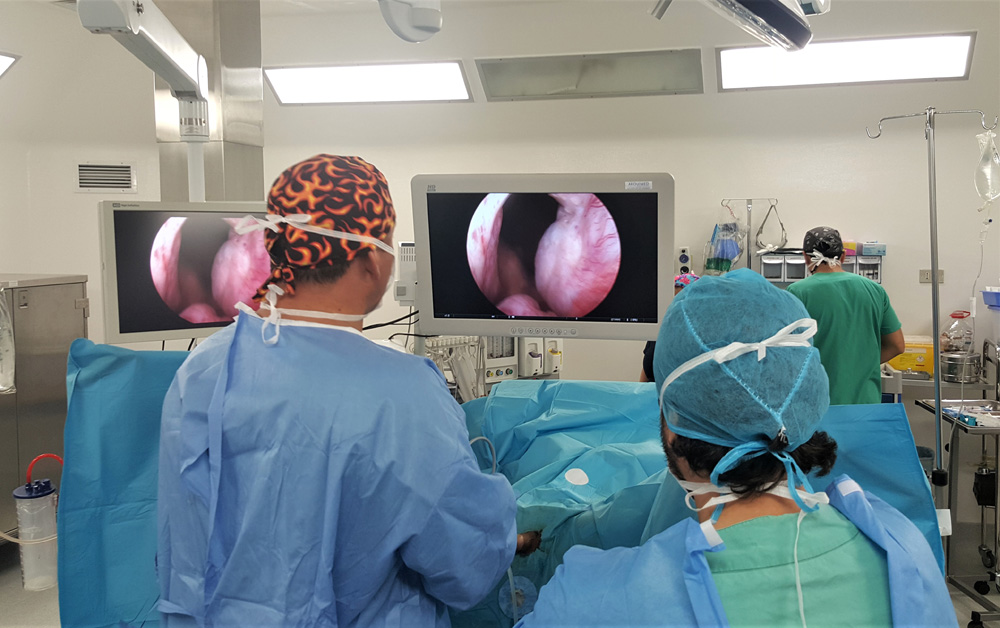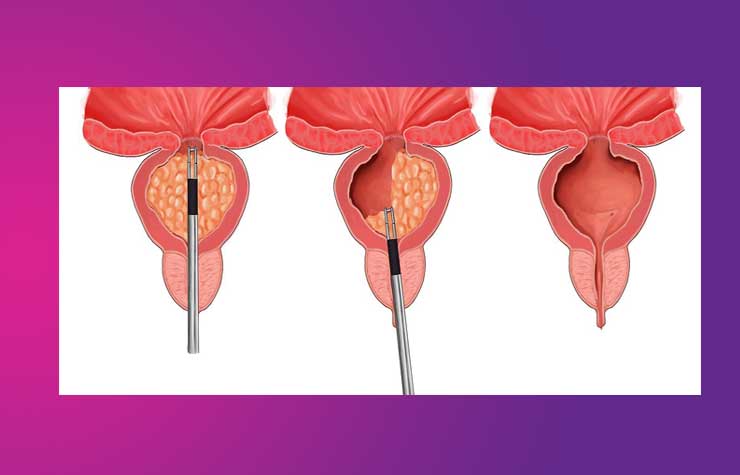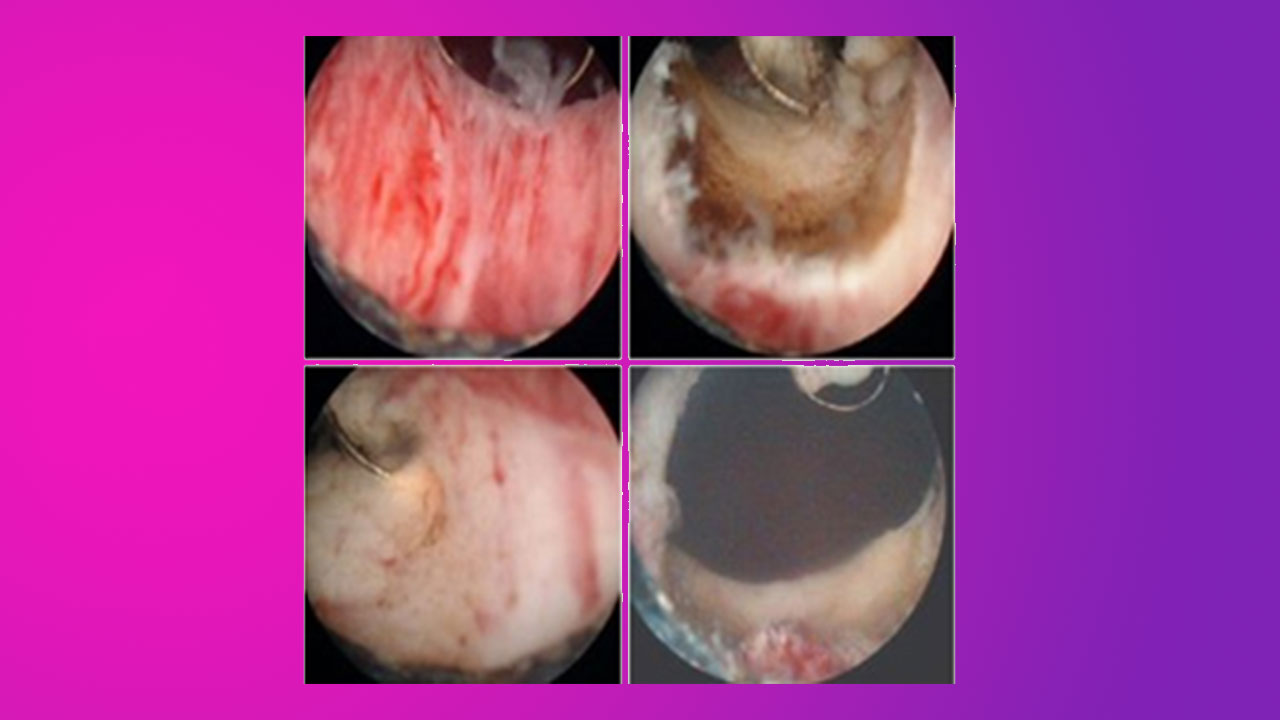Will I have any tubes after the procedure?
Yes, you will have the following:
1. Intravenous ‘drip’ into your vein to give fluids. This is likely to run for a few hours, so that you are well hydrated. This is likely to be stopped soon after you start eating and drinking normally. In rare instances, you may require a blood transfusion.
2. A catheter left in through your penis to drain the bladder. There will be irrigation fluid (saline) running into the bladder and draining out; this is to keep the bladder free of blood / clots. The irrigation is usually stopped early in the morning the following day. You will be expected to drink enough fluids to get your urine very light coloured (the average tends to be around 3 – 3.5 litres /day). The catheter is left in place for 2-3 days in total.
Will I have any pain after the procedure?
Most patients do not have pain, but experience some discomfort in the bladder area for a few hours after the operation. This can be treated with painkillers. Some patients are likely to experience spasms in the bladder – this not only causes pain in the bladder area, but can also lead to leakage of urine around the catheter. If this is troublesome, it can be treated with appropriate medication.
What happens after the catheter is removed?
Your catheter may be removed (the urologist or nurse may refer to this as TWOC – trial without catheter or TOV – trial of voiding) either on the 2nd or 3rd day after the operation. This depends on the clinical context and the urologist makes an individualized plan. You would have been prescribed some laxatives to help you open your bowels, before the catheter is removed.
A small proportion of men do not pass urine after the catheter is removed. If this happens, a catheter will be reinserted and you will be sent home. The catheter will be left in for a few days before it is removed again – this will usually happen in the outpatient clinic.
What should I expect when I go home and how do I take care of myself?
Most men will find that the urinary flow / stream improves almost straight away. The frequency and urgency will take a few weeks to settle down. The internal wound takes 4 – 6 weeks to heal, so you are likely to see some blood in the urine on an intermittent basis. It is best during this period, therefore, to avoid any strenuous activity (eg. lifting weights, cleaning the house, etc). Of course, you can undertake light activity like walking. It also helps if you keep drinking plenty of fluids when you see blood in the urine, to flush it away.
When the internal wound heals and the scab falls off – this can happen anytime between 2 – 4 weeks – you may see quite a bit of blood in the urine and this may be associated with burning when passing urine. You may need to see your doctor / urologist to check your urine and treat any infection if present. If you are unable to pass urine due to blockage by clots you may need to go back into hospital – this is unusual, but may happen.
It is quite common for men to feel tired after this operation. This can in fact last for a few weeks but will improve.
What effect will the operation have on my sexual life?
Erections: although it is commonly quoted as causing problems with erection, TURP probably does not actually cause erectile dysfunction.
Ejaculation: Your bladder neck closes during ejaculation allowing the semen to go forwards and come out of your penis. Since the bladder neck is resected during TURP, this will not happen, allowing the ejaculate to go back into the bladder. So, you may not notice any semen coming out when you ejaculate (dry ejaculation). This is not harmful in any way.
Orgasm: This is not affected by the procedure, although the sensation may be altered in the first few weeks after the procedure.
Fertility: Since the ejaculation is likely to be ‘dry’, you may not be able to father any children, but it has to be understood that this is not a reliable form of contraception.
When can I resume sexual activity?
There are no hard and fast rules about this. In the first 2 weeks any strenuous activity may result in bleeding, so it is perhaps prudent to avoid anything during this period. After this you may have a go at it and see what happens.
Things to remember after the operation….
Urinary frequency and urgency does occur following the procedure and may get worse for some before it gets better. Some things to follow during the 6 weeks period:
DON’T
lift heavy weights or engage in strenuous activity
ride any two wheelers
drive any automobiles in the first 2 weeks
go on long journeys
go to remote locations
DO
drink plenty of fuids
avoid constipation
take gentle exercise eg walking
return to normal activities after the 6 weeks period
In case of any problems or if you have any unresolved queries please do not hesitate to contact your urologist or the hospital.




